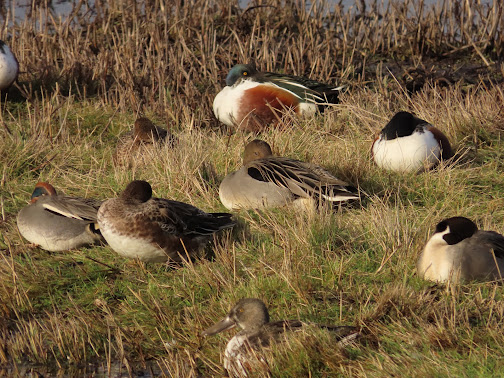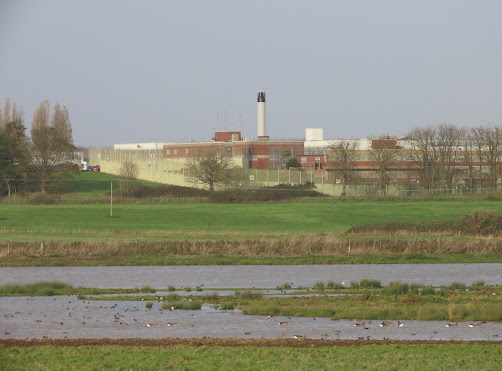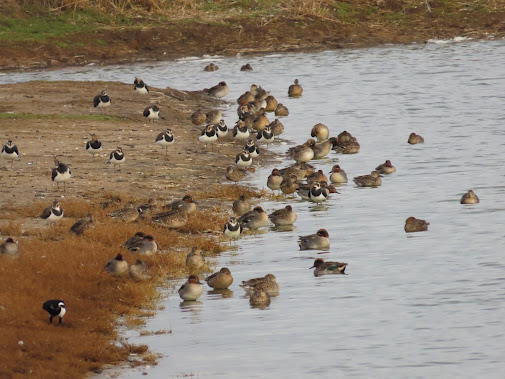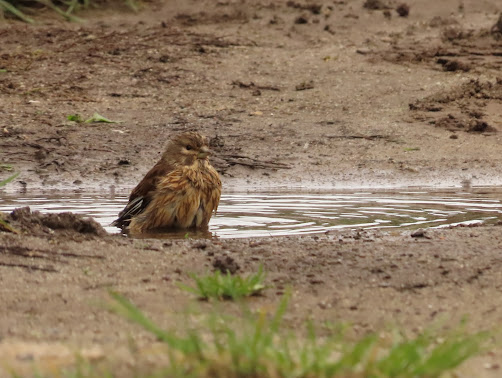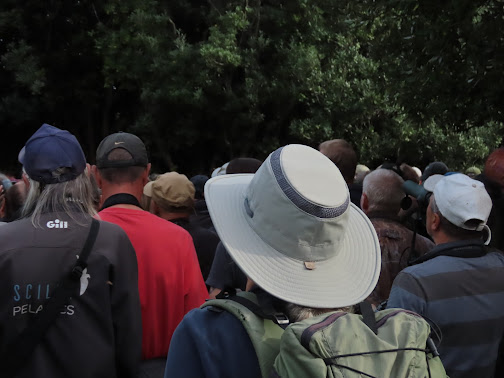The huge numbers of wildfowl that used to come to our shores for the winter now seem to be a thing of the past. The recent mild winters have not provided favourable conditions for the birds to arrive, and now more birds are wintering on the continent, where conditions are more suitable. That's good for Dutch birders, but for us English ones its creating an eerie atmosphere of empty marshlands devoid of birds. That was the case with North Warren today, a place where even four or five years ago, thousands of ducks were present, but today they numbered just in the hundreds. It doesn't help that, despite recent heavy rain, water levels are still low for this time of year, and the grasslands just haven't flooded much, not providing the favourable conditions for the birds.
For a lot of the year North Warren is just a large area of grassland and is therefore not of much interest to the birdwatcher. But for a few months in winter, these grasslands flood, which in the past attracted large numbers of wildfowl. The reserve is famous for its wintering GEESE, often harbouring one of the largest flock of WHITE FRONTED GEESE in the country. With the recent mild weather, expectations were low as very few birds had been recorded so far this winter. I still thought it was worth a look though in the off chance something had turned up. The geese are usually encountered on the northern section, and looking from the viewpoint I was able to count 45 birds, the majority newly in from the continent. With them were two PINK FOOTS, my first sighting at North Warren of this species. In a more drier area was a large flock of several hundred BARNACLE GEESE, the majority of which will have descended from birds that have escaped from captivity on the continent. As geese do, they stretch out in a long line rather than forming any other kind of shape to their flock.
Of the flooding, most of it was on the southern section, and although duck numbers weren't particularly high there were good numbers of PINTAIL, as well as the usual WIGEON and TEAL. A JACK SNIPE was seen in flight from second viewing screen along from Aldeburgh. A female MARSH HARRIER also flew over, causing a few birds to flee, but in general they were blasé of the big raptor.
Mild conditions have benefitted STONECHATS greatly, these little birds get decimated by hard winters, and are fortunately one of the few birds that are doing well, in Suffolk at least. Three birds were present today as usual favouring a nice perch in full view. Large numbers of BLACKBIRD were about, no doubt birds in from the continent. Conversely only singles of REDWING and FIELDFARE were about, this doesn't seem to be a good winter for them, as with the wildfowl, probably down to the mild winter so far.
So not really the best of days, but its good to see there are still birds out there in our countryside. The mild weather is really confusing a lot of our wildlife, and its quite eerie to see the leaves still on the trees in December. What we need is for a blast of coldness to bring in those hard winter birds, and then maybe the spectacle of thousands of birds inhabiting our wetlands will again be something we can still witness.




